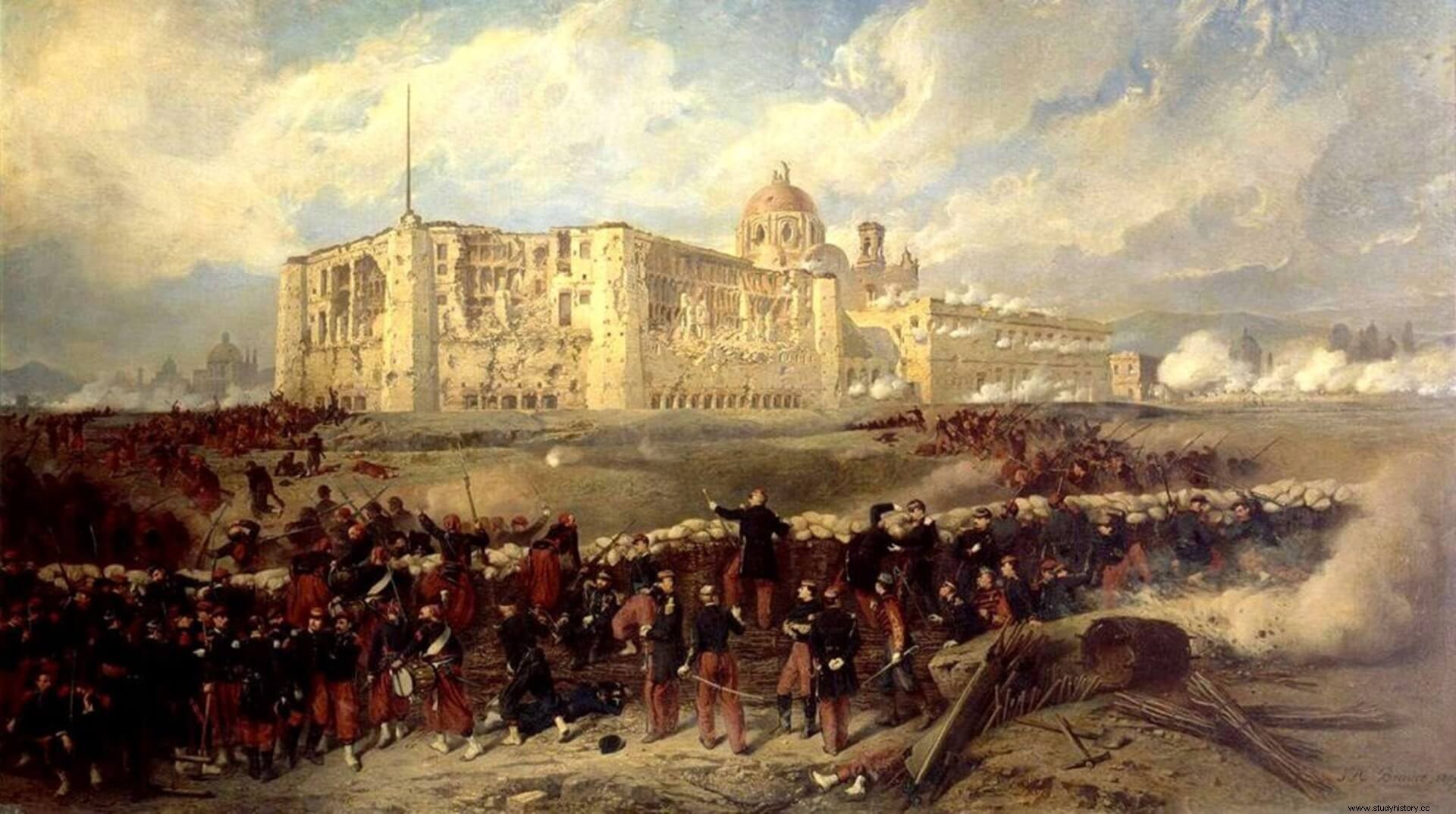
The idea of the intervention was not only born by initiative of Napoleon III . Before the landing of the French imperial troops, the conservatives, who had been defeated in the final War of Reform, had contacted numerous courts in Europe to offer the country to some European prince[1], and their requests were well received by the french emperor. Apart from financial reasons, Paris embarked on this undertaking for two other not insignificant reasons:the first, the French president wanted to engage his country in a civilizing mission, something typical of imperialism and colonialism that was beginning to emerge at the time; the second, the United States was immersed in its own civil war and the time was right to establish a French protectorate in Mexico and eliminate the growing North American influence.
The original French expedition had 2,400 soldiers, compared to 800 men deployed by the British and 5,600 Spaniards under the command of Juan Prim [two]. With the withdrawal of these two powers, France decided to take over the Mexican capital. The army, reinforced with troops from Europe, was placed under the command of General Charles Ferdinand Latrille , better known as the Count of Lorencez. With the reinforcements arriving from the metropolis, the French forces would reach approximately 6,000 troops, a mixture of colonial and metropolitan units, among which there were formations that had recently fought in the Crimea and Italy, so they had great experience.
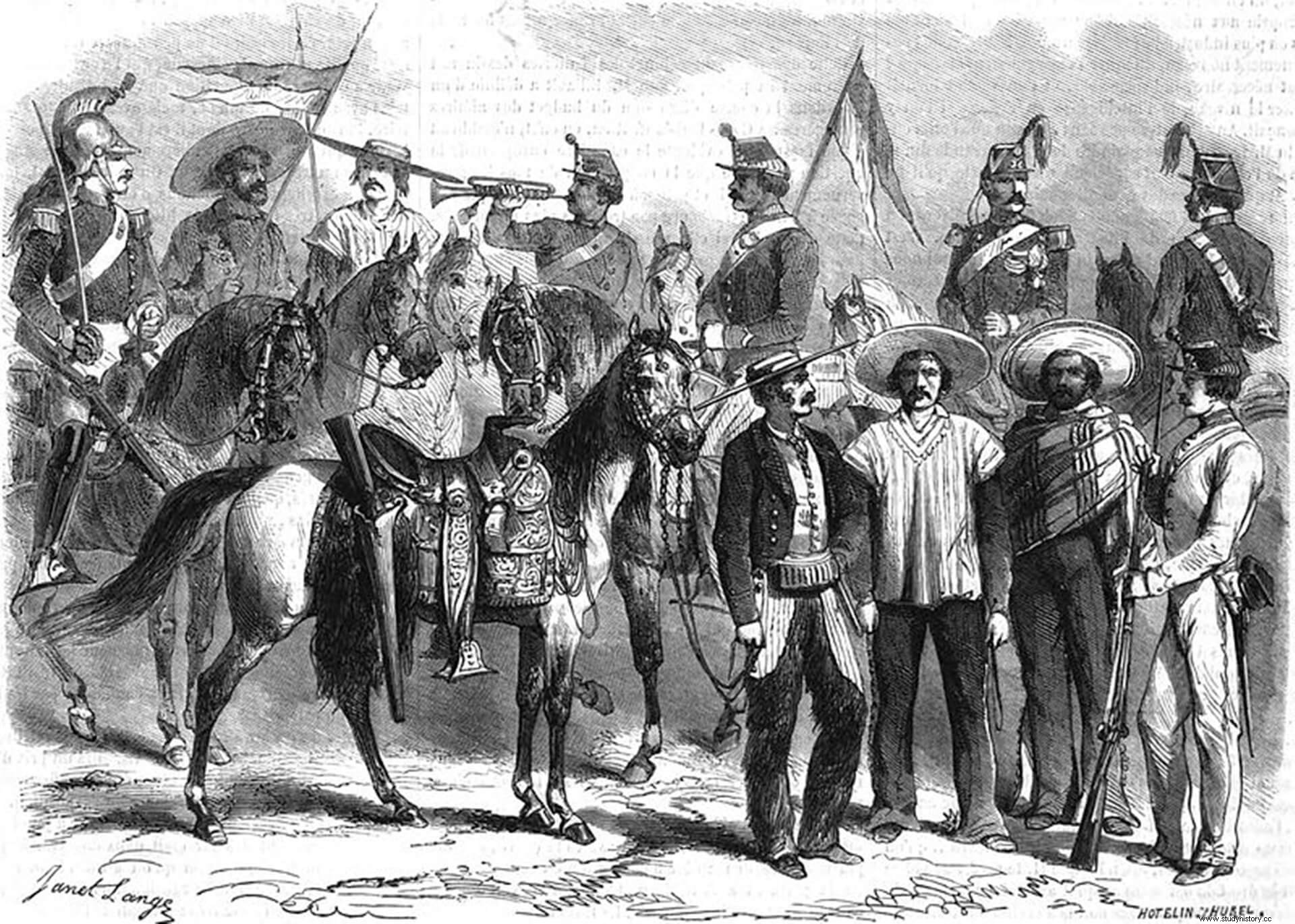
Count Lorencez and Napoleon III thought that this army expeditionary force would be enough to break the new Mexican government, and it was not unreasonable since the country's social and, above all, economic conditions predicted a rapid advance towards the capital, Mexico City, from its base in Veracruz. And they were not without allies, as members of the ousted Conservative Party formed a parallel government that supported the intervention. However, the Mexican army responded quickly to try to stop the French aggression, whose advance, after some skirmishes and previous combats, was stopped in the town ofPuebla , in a battle that would be seared into the national collective imagination.
There they clashed, on May 5, 1862, the Mexican army of General Ignacio Zaragoza and the French army of General Latrille. Zaragoza placed his troops on the battlefield, leaving the initiative to the enemy, and remained in a defensive posture. They were outnumbered, outgunned, and experienced by the French. In addition, the French officers, especially their chief, despised the military value of the Mexicans, whom they described as simple bandits[3]. In Puebla, 4,000 Mexican soldiers defeated 6,000 French, a feat that boosted the hopes of the Republican government to win the war.
The battle was actually not very bloody, Count Lorencez's forces suffered 117 dead and 305 wounded, while the Mexican Republican units had 83 dead and 232 wounded[4]. The battle of Puebla stopped the French advance through the interior of Mexico:the blow had not been great, but it was enough to rethink the strategy that France would carry out in the following years. Napoleon III responded to the defeat by sending 28,000 men under the command of General Forey [5]. The outrage that a poorly equipped and organized troop had inflicted a defeat on what many considered the best army in the world could not go unpunished.
The ephemeral Second Empire of Maximilian of Mexico (1864-1867)
The period of stagnation of the war was extended until the beginning of the following year. After being reinforced by the nearly 28,000 men of General Forey who had arrived from the metropolis between September and October 1863, the French army set out once again towards the Mexican capital. Once again the population of Puebla stood in his way. A year earlier, not even the battle-hardened Zouaves, the elite of the French army, had managed to break the Mexican resistance, but in this second battle the balance finally tipped for Forey's troops, who managed to take the place after a long and tedious siege for which the Mexican general Jesús González Ortega he had counted 22,000 men, while Forey had 26,000[6]. In this confrontation, the casualties of both sides were notably higher than in the first encounter in May 1862.
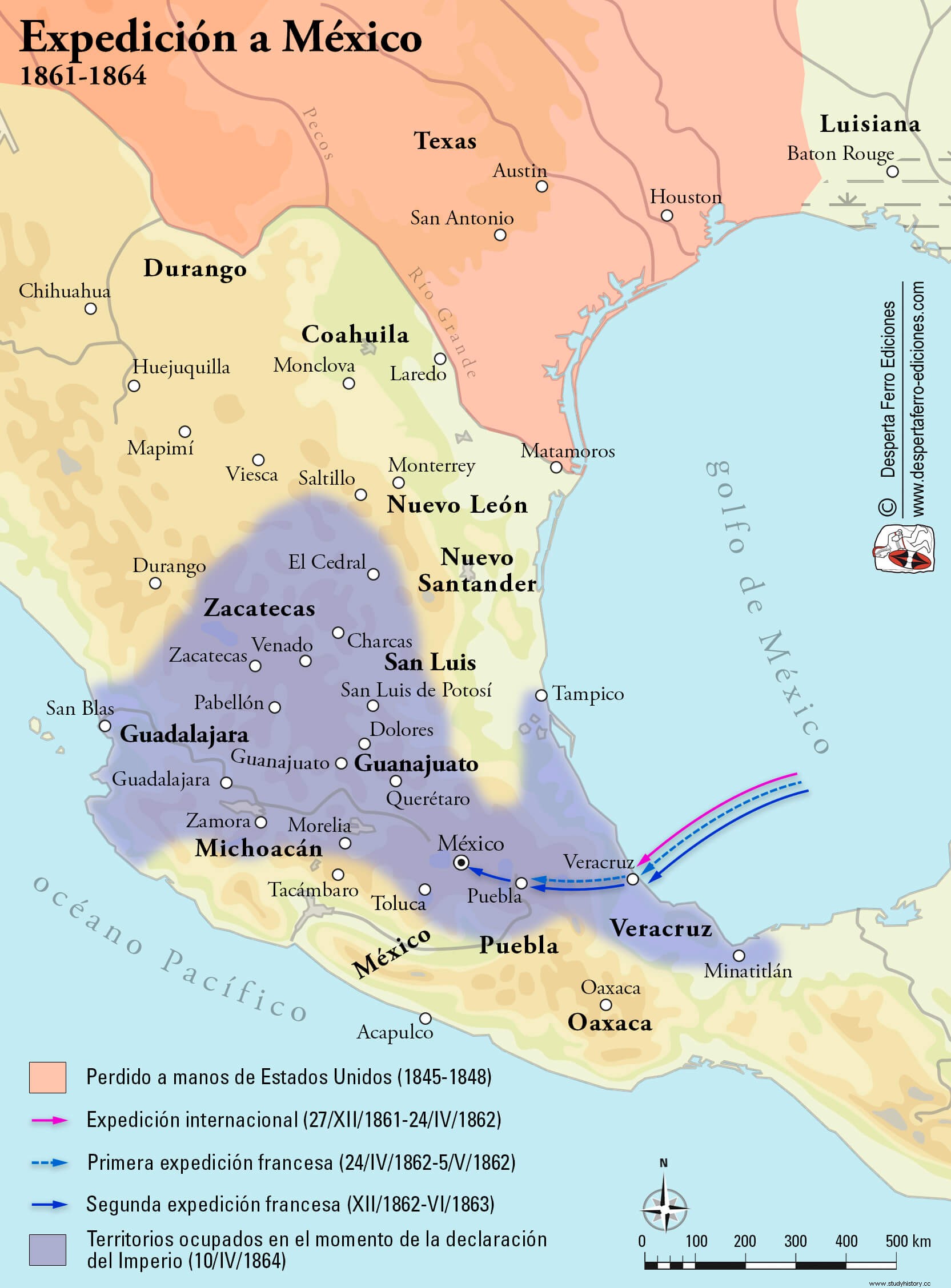
With the Puebla siege completed in mid-May In 1863, the French entry into the capital was immediate, and on June 10, Forey's army marched through the streets of Mexico City . However, the war was far from won. Conservative politicians who had been expelled in the War of Reform saw their wishes quickly frustrated:General Forey gave orders to respect Juarist laws in relation to the nationalization of Church property and freedom of worship[7]. The French administration also ordered the creation of a Provisional Governing Board, which concluded the suitability of a moderate and hereditary monarchy for Mexico.
The Provisional Governing Board then thought of offering the throne to Ferdinand Maximilian of Habsburg . The Mexican delegation in charge of bringing the news to the Austrian Duke, made up of a large group of conservatives and ecclesiastics, arrived at his place of residence in Trieste (Italy) in October of this year, and in February of the following year, Maximilian of Habsburg accepted become emperor of Mexico. In this way, the ultimately ephemeral Second Mexican Empire was constituted. , an entity subordinated to the Second French Empire. The new emperor did not arrive in his new country until May 28 and, to the surprise of the conservatives, from the beginning he carried out a policy aimed at gaining the support of the liberals.
Republican government forces continued to resist the French in certain points and territories throughout the country. The guerrilla warfare initiated by the Republicans wore down the French units, although never to the point of forcing them to abandon the fight. The nascent Second Empire tried to organize an armed force, although without much success. As late as 1866, it only had 7,650 regular soldiers, 9,400 auxiliary soldiers, and 12,200 rural guards and policemen, totaling about 30,000 men, while the French forces numbered 38,000. For its part, the Mexican republican army had considerably increased its troops, reaching numbers of approximately 50,000 troops[8].
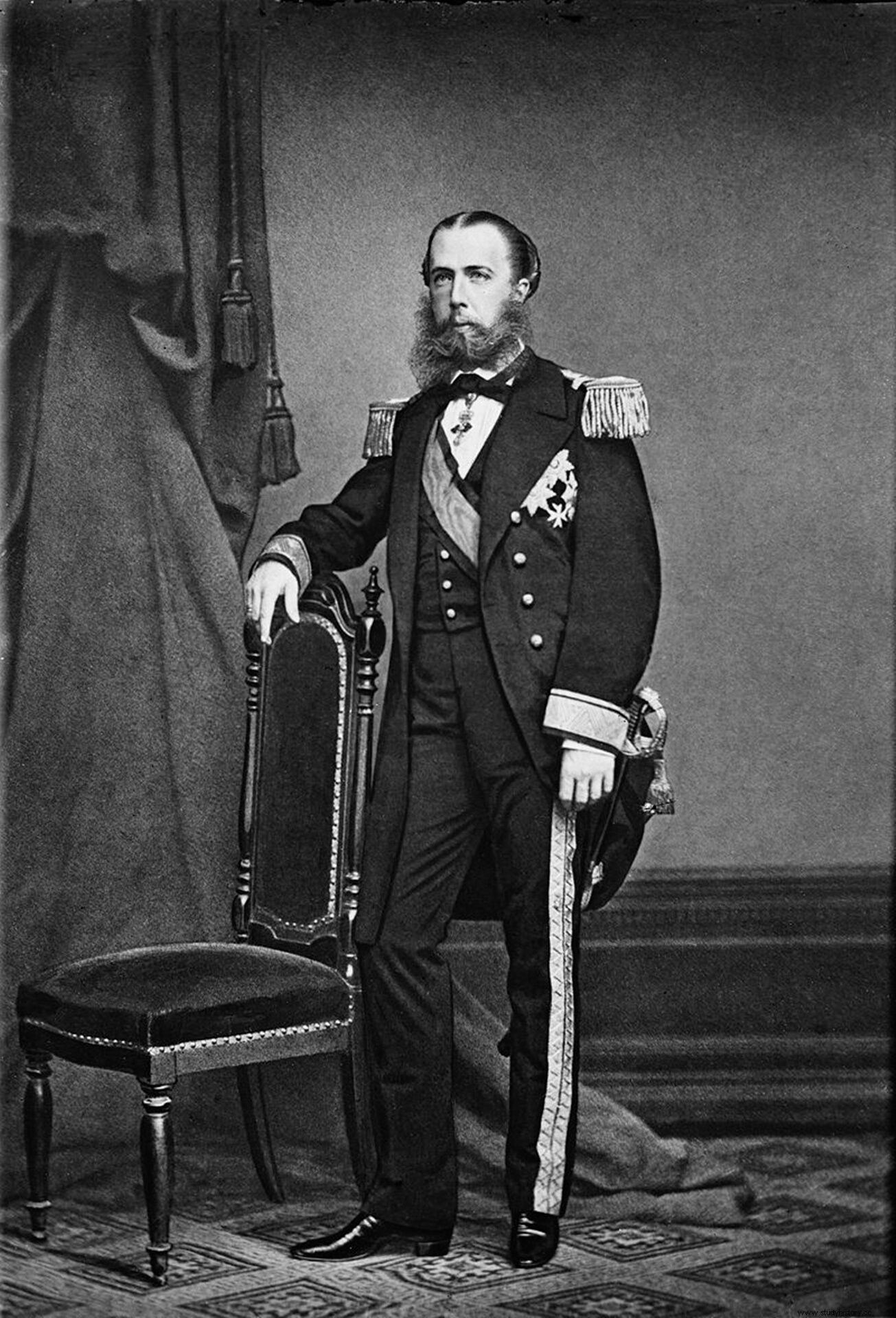
However, the international context began to play into against Maximilian. In the neighboring country, in April 1865 the Union finally managed to impose itself on the confederate states. The United States was reunited again and it would not take long to take action on the matter of what was happening in Mexico. A year later, in 1866, trouble began to mount for France. In Europe, the Kingdom of Prussia, ruled byWilliam I and his chancellor Otto von Bismarck, launched a series of armed conflicts whose ultimate goal would be the unification of Germany. Before the beginning of the tensions, Napoleon III decided to withdraw most of his forces from Mexico, leaving Maximilian of Habsburg to his fate. With the French withdrawal and the renewed republican advance, in 1867 the new emperor fell along with his entire government.
The consequences of the French intervention
The decomposition of the Second Mexican Empire happened quickly. After the loss of control in the territories dominated by the empire, Maximilian and his closest retinue took refuge in the city of Querétaro . There, the last imperial forces, depleted of their rations and ammunition, capitulated after a 72-day siege. Maximiliano was captured after refusing to flee.
Between June 13 and 15, 1867, Maximilian of Mexico and his collaborators Miguel Miramón (who had been a prominent conservative leader in the War of Reform) and Tomás Mejía they were sentenced to death in a trial held at the Iturbide theater in Querétaro. On June 19, on the Cerro de las Campanas, the three men were shot by a squad of seven soldiers. Before dying, the deposed emperor even said:
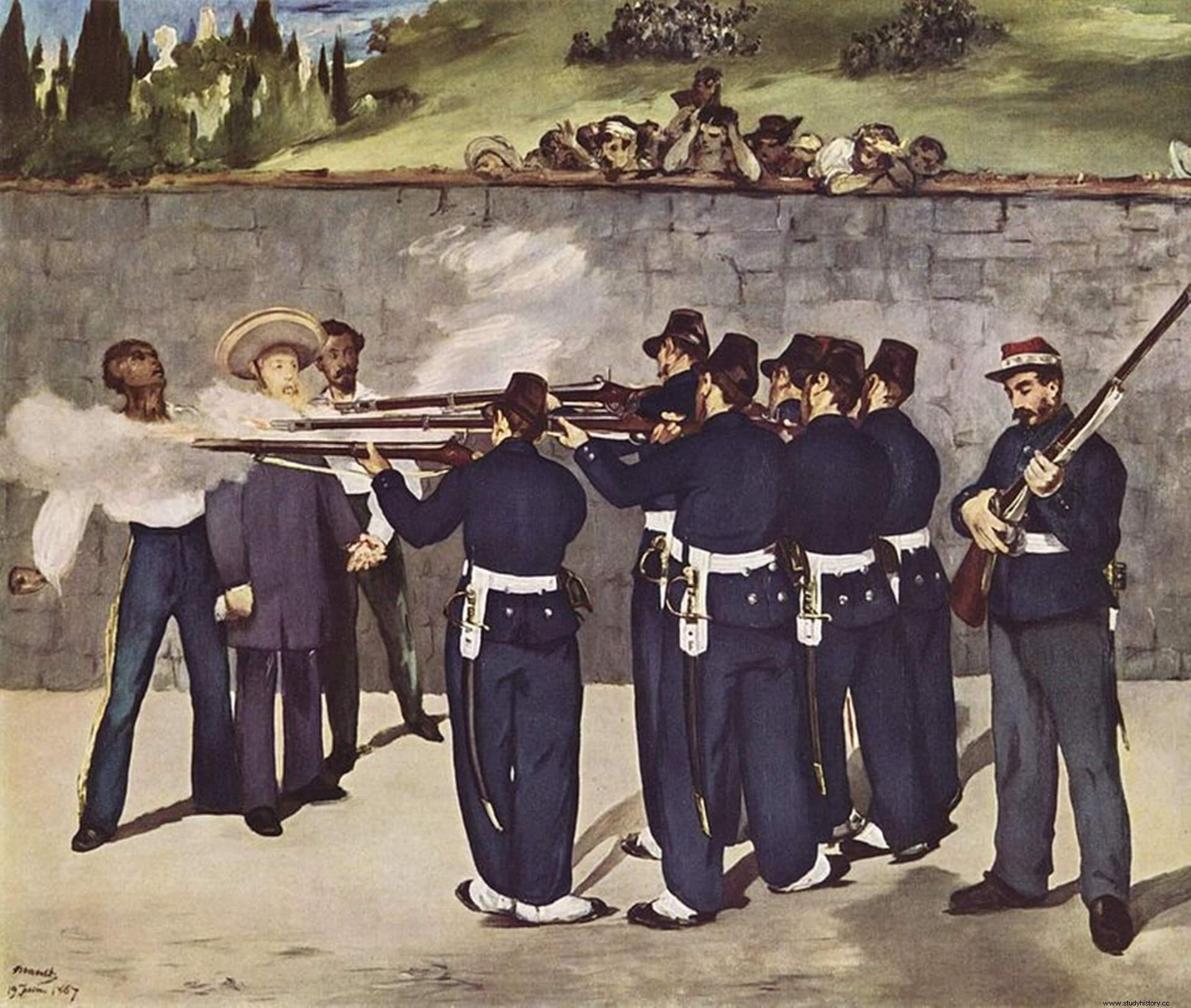
Maximilian's remains were embalmed and transferred to the Mexican capital, where they were exhibited in the convent of San Andrés. Some time later, the body was transferred back to its homeland, Austria, a mission entrusted to Admiral Wilhem von Tegetthoff and carried out on the frigate Novafra, the same one that had brought Maximiliano to Mexico in 1864. With his death and the disappearance of the Second Empire was closed in the Mexican Republic a long period of civil conflict and foreign intervention. However, Mexico would still have many problems to solve throughout the following decades and that would continue until the 20th century.
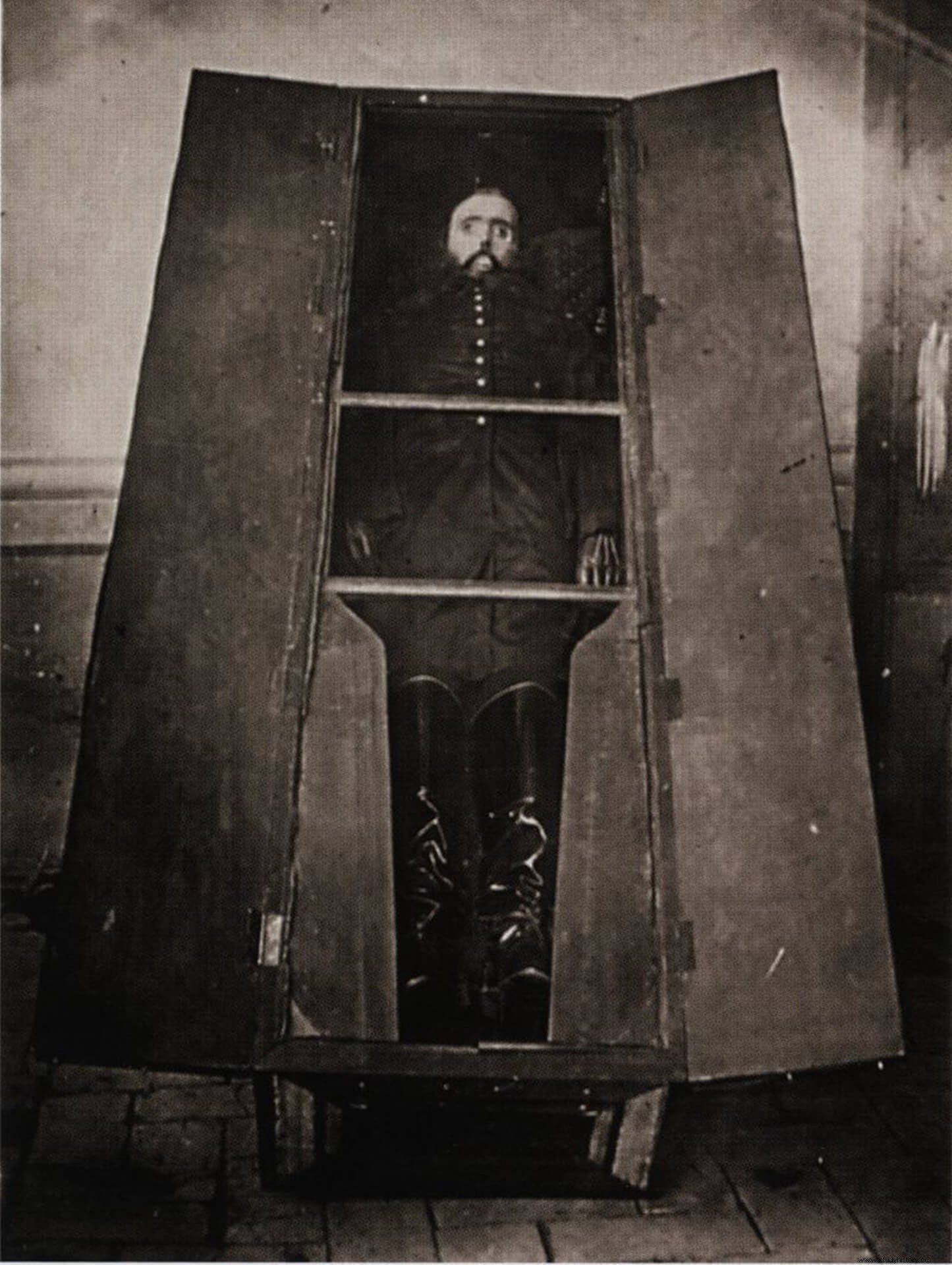
Bibliography
- Chartrand René &Hook Richard (1994). The Mexican Adventure 1861-1867 . Ed. Osprey Publishing, London.
- Duvernois Clement (1868). The French intervention in Mexico . Ed. El Progreso, Veracruz.
- González Lezama, Raúl (2012). Cinco de mayo:the reasons for the victory . Ed. National Institute of Historical Studies of the Revolutions of Mexico, Mexico.
- National Institute of Historical Studies of the Mexican Revolution (1990). The French intervention and the Second Empire . Ed. Virtual Legal Library, Mexico, pp. 51-62.
- Torrea, Juan Manuel (1863). Glory and disaster:Puebla 1863 . Ed. Beatriz de Silva.
Notes
[1] National Institute of Historical Studies of the Mexican Revolution, 1990, p. 51
[2] Ibid., 1990, p. 54.
[3] Duvernois, 1868, p. 126.
[4] González, 2012, p. 13.
[5] Chartrand &Hook, 1994, p.6.
[6] Torrea, 1863, p. 21-23.
[7] National Institute of Historical Studies of the Mexican Revolution, 1990, p. 57.
[8] Chartrand &Hook, 1994, p. 11.
